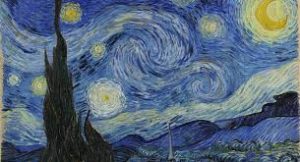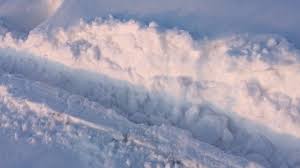OIL ART PAINTS (part 2)
 You probably noticed that the colors on the palette soon stop getting dirty, but if you slightly press on them with your finger, you can make sure that they are soft. Inside the paint almost did not change its density, and hardened only on top. This feature of drying an oil binder has been known since ancient times. Artists sought to achieve a more uniform drying, as well as colorless films, get rid of the harmful substances contained in oils. To do this, they were washed with water, frozen, boiled.
You probably noticed that the colors on the palette soon stop getting dirty, but if you slightly press on them with your finger, you can make sure that they are soft. Inside the paint almost did not change its density, and hardened only on top. This feature of drying an oil binder has been known since ancient times. Artists sought to achieve a more uniform drying, as well as colorless films, get rid of the harmful substances contained in oils. To do this, they were washed with water, frozen, boiled.
There are many ways to process oil. Here is the simplest and, according to many artists, a good way to get condensed oil: it is exposed to the sun in an unclogged bottle of white glass Continue reading
OIL ART PAINTS (part 1)
 Artistic paints consist of colored powder – a pigment and a binder that holds together the smallest particles. In painting, mainly inorganic coloring materials are used, as more persistent, less often organic.
Artistic paints consist of colored powder – a pigment and a binder that holds together the smallest particles. In painting, mainly inorganic coloring materials are used, as more persistent, less often organic.
There are pigments of natural origin and prepared artificially.
In ancient times, artists used exclusively dyes found in nature in the form of various minerals: malachite, azurite, auripigment, lapis lazuli (lapis lazuli) and all kinds of colored earths. In addition, they used dyes of organic origin, which were obtained from various plants and simple animal organisms – mollusks, worms.
But over time, many natural pigments were replaced by artificial ones. So, for example, blue ultramarine paint, valued more than gold (it was obtained from lapis lazuli minerals), was replaced in the 19th century by cheap artificial ultramarine. Continue reading
TALKS ON THE ISLANDS OF ART (part 3)
 The desire for a new one, by all means, was imposed on art at the beginning of the 20th century. In canonical arts, in Russian iconography, for example, the artist was free from the search for composition. He directed all his internal energy to spiritualize the image. There is such an opinion in Russian philosophy of art: the more external limitations the artist has, the freer he is internally. I certainly do not call for this. Now this is impossible. Everyone just has their own way.
The desire for a new one, by all means, was imposed on art at the beginning of the 20th century. In canonical arts, in Russian iconography, for example, the artist was free from the search for composition. He directed all his internal energy to spiritualize the image. There is such an opinion in Russian philosophy of art: the more external limitations the artist has, the freer he is internally. I certainly do not call for this. Now this is impossible. Everyone just has their own way.
I also think that virtual worlds stored on infinitely renewable media, or printed with ink of dubious durability, can burst like soap bubbles at any time.
A pile of plastic garbage will be a monument to the 21st century. Continue reading
TALKS ON THE ISLANDS OF ART (part 2)
 02/13/2011 Jrn Calo:
02/13/2011 Jrn Calo:
Dear Tatyana!
First of all, I must tell you that I like to think and manage the reading public. We live in an era of image, when there is no time for reflection. People often prefer to act, because thinking and working on their inner world takes too much time. Therefore, I like to make provocative judgments in order to stimulate new thoughts and ideas. I would also like to look into the future to find out how the history of art will develop and imagine what could happen in art tomorrow.
Each company uses all its resources and knowledge that may be useful to the cause. If you think that everything that is hand-made is art, you acknowledge that the urinal of Marcel Duchamp or the shark in formaldehyde Damien Hirst is art. Continue reading
TALKS ON THE ISLANDS OF ART (part 1)
 Traveling in the endless sea of the Internet, you can find a great many large and small sites where people share their art, want to be heard and seen, but more often want to sell their works. On one of these islands I was lucky enough to meet a man who is seriously interested in the future of art. This is a Spanish writer and artist, recently engaged in the art associated with the latest computer technology Jrn Calo. He leads his multimedia magazine.
Traveling in the endless sea of the Internet, you can find a great many large and small sites where people share their art, want to be heard and seen, but more often want to sell their works. On one of these islands I was lucky enough to meet a man who is seriously interested in the future of art. This is a Spanish writer and artist, recently engaged in the art associated with the latest computer technology Jrn Calo. He leads his multimedia magazine.
We started a correspondence, which turned out to be interesting and useful to both of us. Questions related to contemporary art, concern many. Therefore, we decided to make our dialogue accessible to others – on the pages of the Spanish magazine and here on our website.
After my question, does he like the abstract works of one contemporary artist, Jrn Calo wrote me the following. Continue reading




